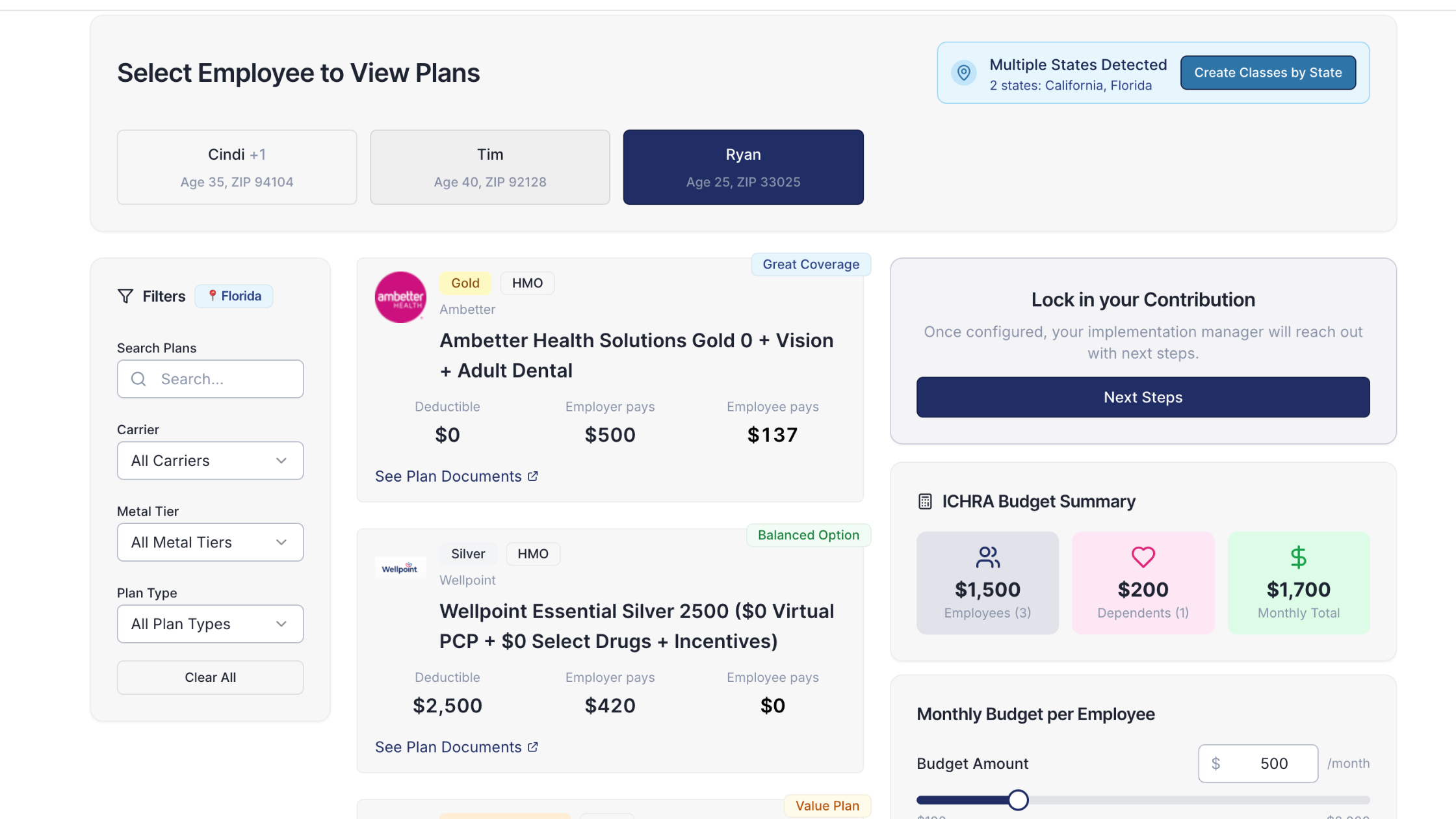How much ICHRA money should you give your employees in 2025?

As we approach January 1, it's time to set your ICHRA Funding Strategy for 2025 and decide how much to provide your employees for health insurance. In this post, we answer frequently asked questions that we've received from our clients.
What Are My Options for 2025?
As an employer, you have a range of flexible options at your disposal:
Option 1: Keep Your ICHRA Funding Strategy the Same
If your current approach is working well and employees are happy, you can choose to maintain it. You'll stick with the same "method" (percentage-based or flat-dollar contributions), but your costs will adjust based on local insurance rates. For example, at Venteur, we decided to keep our 2025 ICHRA Funding the same as 2024, which resulted in a 5% increase in overall cost.
Option 2: Keep Your Budget the Same, Adjust Your Strategy
If you prefer to keep your overall budget unchanged, you can adjust your strategy instead. This may involve reducing your contribution percentages or shifting your employee classifications to fit the available budget better while providing adequate coverage options. The con of this approach is that your employees may have to pay more for their health insurance premiums if they keep the same plan.
Option 3:Try Something Completely New
You have the flexibility to implement an entirely new strategy. This could mean exploring different contribution models, adjusting your employee classes, or setting up additional perks to attract and retain talent in a competitive market. Current Venteur customers can access financial modeling tools in their employer portal that will allow them to model different scenarios.
What Is an "Affordable" ICHRA Funding Strategy?
There are two definitions to consider:
The Legal Definition:
The IRS has defined affordability guidelines under which employers need to ensure their ICHRA offerings are affordable, or they could face penalties. For 2025, your employees' share of health insurance premium costs cannot exceed 9.02% of their household income.
The Functional Definition:
Beyond legal compliance, an "affordable" strategy should balance company financials with employee needs. This means ensuring that your employees can reasonably afford the insurance options available to them under your plan without feeling financial strain.
How do I know how my ICHRA Funding Strategy will impact my employees?
Current Venteur customers can log into their Employer Portal to model scenarios. Our tools will show the economic impact of your ICHRA Funding Strategy on each each employee. This can help you anticipate challenges your team might face and fine-tune your contributions accordingly.
What Does a Good ICHRA Strategy Look Like?
The answer depends on your specific business needs and goals. For many of our clients, a "good" strategy typically looks like:
- 80% of the cost of a Gold plan for employees
- 50% of the cost of a Gold Plan for dependents
However, it's important to remember that "good" is subjective. If you're in a competitive industry where talent is hard to come by, you should fund your ICHRA more generously to attract top candidates. For other businesses, ICHRA offers the chance to provide health benefits for the first time ever. If this describes you, we celebrate you. Offering even basic coverage can significantly impact employee morale and retention.
Other Tips for 2025:
Reevaluate Your Employee Classifications: If your workforce has changed or you're facing recruitment or retention challenges, it might be time to reassess your employee classes and adjust your ICHRA contributions accordingly.
Consider Local Insurance Market Trends: Rates vary significantly by region, so be aware of local trends when setting your ICHRA budget. Our tools can help you analyze local market shifts and make adjustments.
As always, the Venteur team is here to help and can provide additional modeling for your team so that you can feel confident that your ICHRA funding strategy for 2025 not only aligns with your company's financial goals and supports your team's well-being.
You got questions, we got answers!
We're here to help you make informed decisions on health insurance for you and your family. Check out our FAQs or contact us if you have any additional questions.
Explore more related content
What is Venteur
Explore the best human-first Health Insurance platform
Simple, personalized health benefits
Sign up in minutes, define your contribution, and let your employees choose the health plan that works right for them
Integrations to make everything run smoothly
We'll connect with your payroll and finance systems to make deductions and premium payments seamless
Easy onboarding and off-boarding
In just a few clicks, add your roster and make updates on the fly. We'll handle it from there.
Venteur Certified Brokers to help your employees pick the right plan
Our trusted brokers ensure the best outcomes for employees and employers by unlocking health savings and providing unrivaled plan options.
AI-powered plan recommendations to give you confidence while you shop
Backed by 30 years of healthcare data, Venteur’s AI helps employees compare and choose the best plan for their unique situation.
Compliance and reporting because no-duh!
Venteur manages plan administration, reporting, and compliance so you can focus on growing your business.


